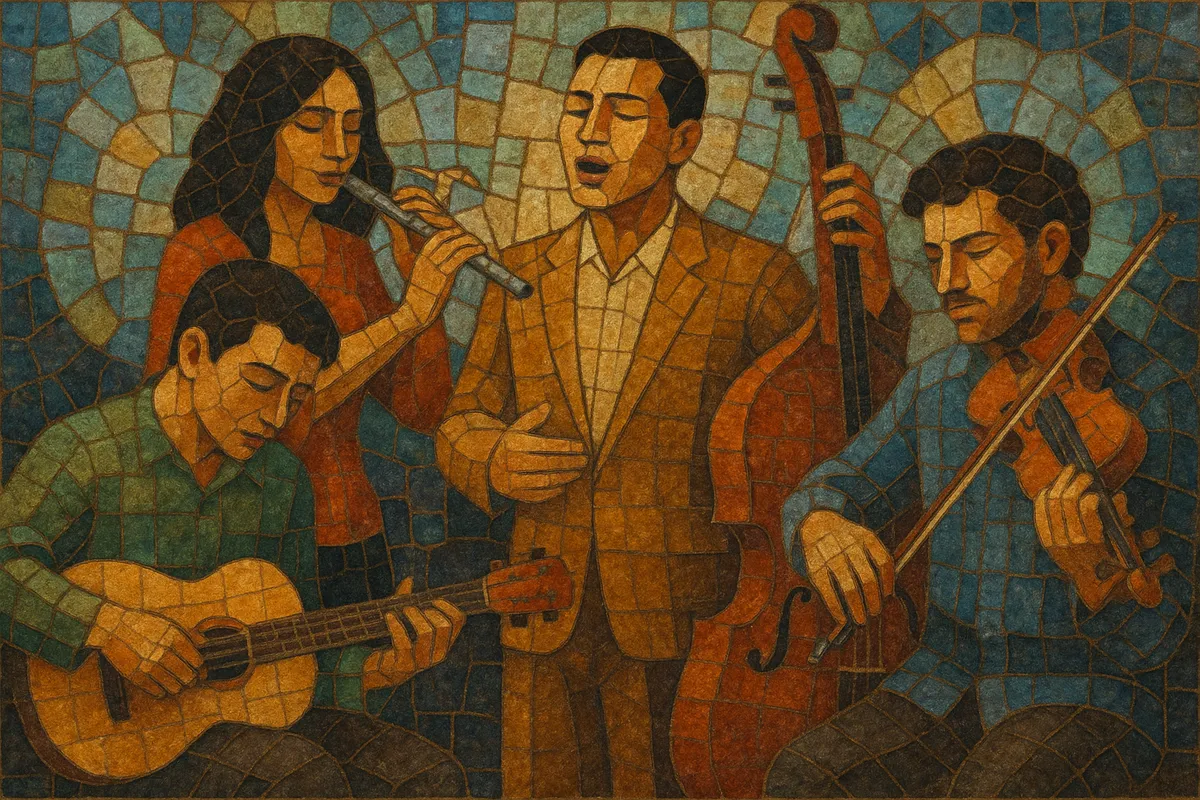Keroncong is an Indonesian popular/folk genre with deep roots in Portuguese musical traditions that took shape in urban Java during the late 19th and early 20th centuries. It blends European harmony and song forms with Indonesian melodic sensibilities and poetic expression.
The classic ensemble features the cak (a small, high‑pitched ukulele playing off‑beat staccato chords), the cuk (a slightly larger ukulele providing on‑beat support), a nylon‑string guitar with arpeggiated patterns, pizzicato cello outlining a distinctive "ding‑dung" rhythmic ostinato, double bass, violin, and flute. Vocals are lyrical and ornamented, often conveying nostalgia, romance, and patriotism.
Keroncong uses mostly diatonic harmony (I–IV–V with secondary dominants), moderate tempos, and a supple swing that can lean toward habanera or waltz feels. Its most famous repertoire includes evergreen songs such as Bengawan Solo, and it remains a cultural emblem of Indonesia’s cosmopolitan past and present.
Portuguese sailors and settlers brought plucked-string instruments and song traditions (notably related to fado and Iberian dance-song forms) to the Indonesian archipelago from the 16th century. Over centuries of intercultural contact, these elements mixed with local musical tastes and performance practices. By the late 19th century, an urban style known as keroncong had coalesced in Batavia (Jakarta) and other Javanese cities, adopting European harmonies while reflecting Indonesian aesthetics and language.
In the early 20th century keroncong flourished in cafés, social clubs, and theater (including stambul). Ensembles standardized around the cak–cuk ukulele pair, guitar, flute, violin, cello, and contrabass. Recordings and radio broadcast spread the style, turning it into a pan-archipelago popular music. Its repertoire expanded to include patriotic and romantic subject matter, with polished arrangements and a recognizable rhythmic motor: the interlocking off-beat strum of the cak and the on-beat pulse of the cuk.
During and after Indonesia’s independence, keroncong became a symbol of national culture. Composers and singers such as Gesang and Ismail Marzuki wrote enduring songs; orchestras refined the idiom with richer harmonies and instrumental introductions (buka) and interludes. The style’s balanced blend of European harmony and Indonesian lyricism made it accessible, dignified, and emotive.
From the 1970s onward, keroncong inspired hybrids. Langgam Jawa adapted keroncong instrumentation to Javanese melodic modes and diction, while later campursari fused keroncong textures with gamelan and dangdut sensibilities. Although mainstream Indonesian pop eclipsed keroncong commercially, the genre endures through community orchestras (e.g., Keroncong Tugu), festivals, academic programs, and heritage recordings. Contemporary artists continue to refresh the tradition with new arrangements and studio techniques.


